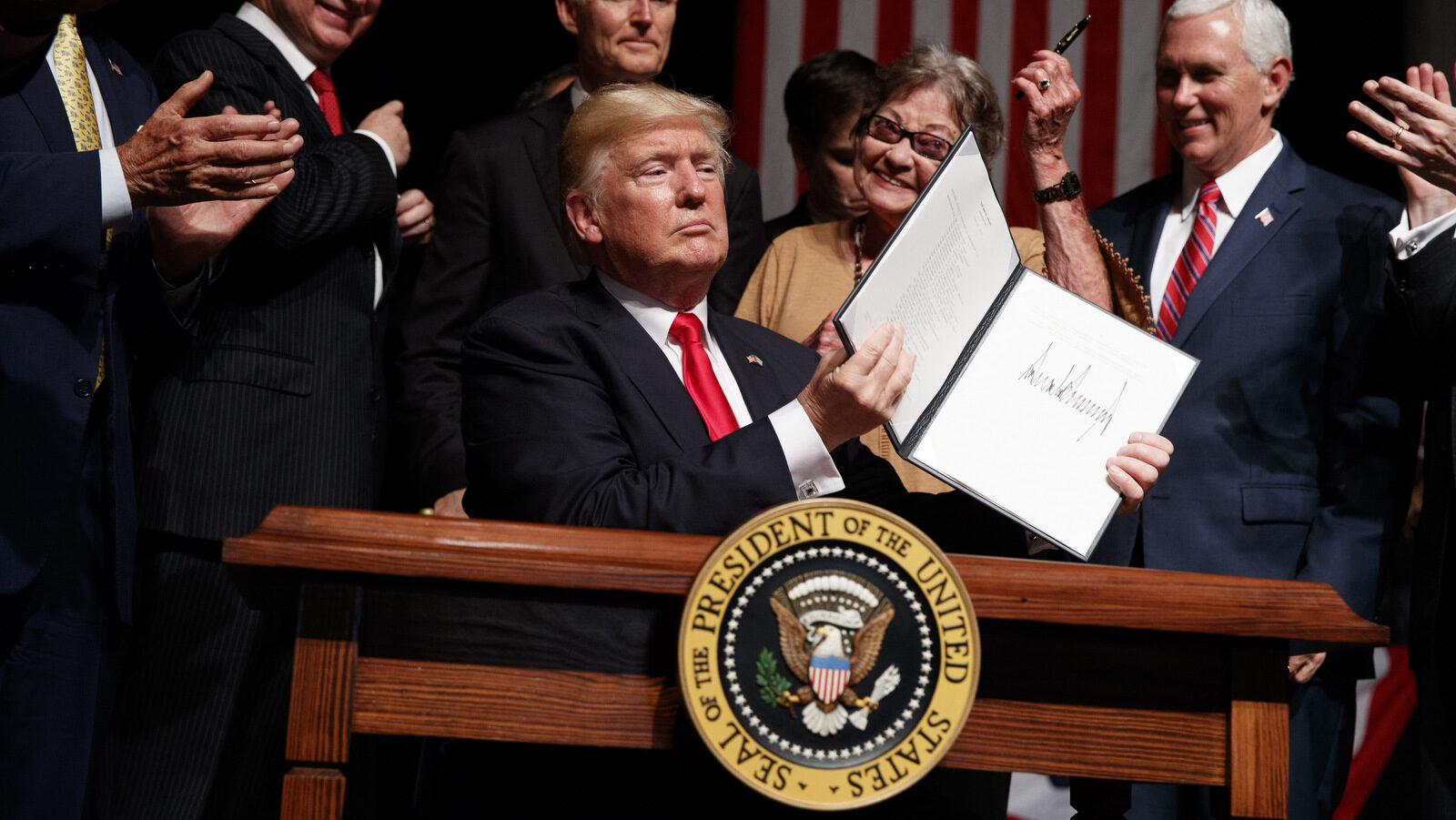Despite portraying himself as a “master negotiator” throughout last year’s campaign, Donald Trump as president has come to rely increasingly on the issuance of executive orders instead of brokering deals — whether bipartisan or within his own majority party — to meet his policy goals.
Many of these executive orders have been aimed at reversing Obama-era regulations, particularly environmental regulations, as well as others that Trump argued, were hurting businesses. These regulations, for example, included rules put into place after the 2010 BP oil spill in the Gulf of Mexico that restricted offshore oil drilling. Others include the formation of a controversial commission on voter fraud, repealing parts of Obamacare, and the imposition of sanctions on countries like North Korea and Venezuela.
To date, Trump has issued 49 such executive orders – the most recent of which was signed on October 12th – with more than two months still left in the year. Trump has thus issued executive orders at a rate significantly higher than either of his immediate predecessors, Barack Obama or George W. Bush. Obama, for instance, issued 39 executive orders in his first year and the highest number issued during his time in office was 42 in 2016. Bush issued significantly more than Obama, but the highest annual number of executive orders signed — excluding the year 2001, when many of Bush’s executive orders were related to national security following 9/11 –was 45 in 2004. Thus, Trump – in office less than a year – has already issued more executive orders on an annual basis than in any year since 2001.
The Best Dealmaker
Even more than the frequency of issuance per se, it is the expanded scope and impact of recent executive orders that stands out in historical context. Prior to becoming president, Trump criticized Obama’s use of executive orders regularly, asserting that Obama’s use of the orders proved his isolation as president as well as that he “couldn’t get anything done.” For instance, during a Republican primary debate last February, Trump lambasted Obama’s use of executive orders in these words:
Obama goes around signing executive orders. He can’t even get along with the Democrats. He goes around signing all these executive orders. It’s a basic disaster. You can’t do it.”
Trump had previously called Obama’s executive orders “major power grabs of authority.”
Why is @BarackObama constantly issuing executive orders that are major power grabs of authority? This is the latest
http://t.co/4IVBckTE— Donald J. Trump (@realDonaldTrump) July 10, 2012
While he characterized Obama’s use of executive orders as “irresponsible,” Trump also stated in an interview last year with NBC’s “Meet the Press” that Obama had “led the way” for subsequent presidents to use executive orders freely, adding that he would not refuse such powers if elected. Trump argued, however, that, unlike Obama, he would use executive orders for the “right things.” “I’m going to use them much better [than Obama] and they’re going to serve a much better purpose than he’s done,” Trump added.
Related | Trump’s New Executive Order Is Still A Muslim Ban
However, whether Trump’s executive orders are “better” in content than Obama’s is really a secondary point. Though they have been used by presidents for much of the nation’s history, executive orders were originally intended to establish schedules for employees of the executive branch or to aid agencies under the control of the White House carry out their duties. Yet, in recent years, they have been essentially used to bypass legislative due process.
Obama cemented this new and authoritarian take on executive orders when he stated in 2012 that “If Congress refuses to act, I’ve said that I’ll continue to do everything in my power to act without them.” This statement is a stark rejection of Congress’ role in creating and amending legislation — a rejection that Trump has heartily if hypocritically embraced, given his isolation even within his own party and his inability to materialize the “art of the deal” for which he is ostensibly famous.


